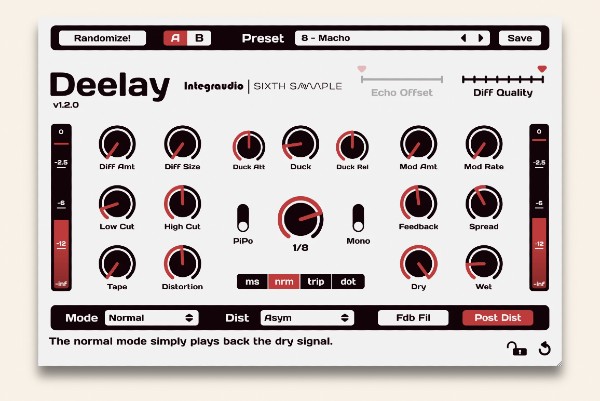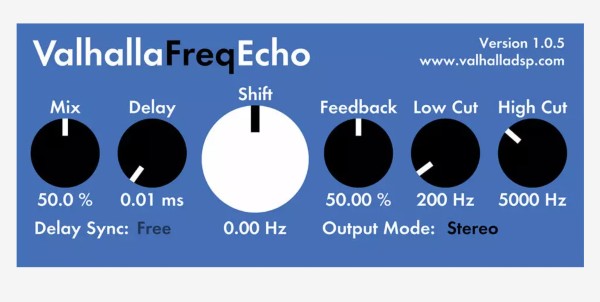Reverb vs Delay Explained: What's The Difference?

This guest article comes from music producer Superlate and aims to help you make sense of all things reverb and delay. Let's get stuck in.
What is the difference between reverb and delay?
Step into any reverb-drenched environment, and you'll find an almost universal human impulse – a desire to clap, shout, and let the magic of delay and reverb dance around the space. It's a testament to our innate fascination with rich sonic landscapes.
Dive deep into the heart of any song, and you're bound to encounter washes of reverb and a rhythmic allure of delay. These effects shape the very essence of the music we love. But amidst the vast array of VST plugins, loop pedals, and other production enhancing features, a common question beckons: what sets them all apart?

What does reverb mean?
Reverb, short for reverberation, is a sonic party trick that happens when a sound is released in a space. The sound waves emanating from the original source radiate in all directions.
As these waves rebound off surfaces, they generate what is known as early reflections. These reflections reach our ears milliseconds later, originating from different distances, and create a lingering wash of sound that gradually fades away – much like confetti slowly settles onto a crowd after it is fired off the front of a festival stage.
What is delay?
The other side of things is delay – the time-based effect that can dish out vibes similar to reverb, but in its own unique way.
Picture delay as the rhythm-maker of your sounds, rolling out duplicated replicas of the original sound. This duplication creates a much more rhythmic spacial effect as these “reflections'' only happen rarely and at very mathematically precise times. Unlike the sprawling, washed-out vibes of reverb, delay has a tight feel, serving up an intricate experience.
Imagine it as sculpting the phenomenon of space, but where every echoed note finds its groove.
How to use reverb and delay
The most fun and logical way to explore reverb and delay effects is by listening to the effects in action. Let’s use London Grammar's "Hey Now" for reference.
0:00 - The track begins with a very dry Fender Rhodes sound. The subsequent introduction of guitar, drums, and vocals serves as an excellent creative example of delay and reverb.
0:12 - A drum sample is introduced that cleverly expands in a wash of reverb from the right to the left speaker, creating a huge contrast to the piano.
0:47 - Delays are applied to the guitar, creating a dancing illusion of space that grows and shrinks along with the dynamics as Dan, the guitarist, plays louder and quieter. All the while, Hannah’s angelic voice is given a cathedral-like luscious reverb, which is exactly where a voice like hers belongs.
This example demonstrates how reverb and delay can transform minimal, originally thin sounds into a vibrant, luscious experience. Instead of immediately adding another layer to a track, consider exploring the possibilities that these two effects offer first.
Bonus Tip: Make sure you spend time listening through some different presets in your reverb plugin! A reverb sound can completely change the feel of a song, so it’s worth having a browse.
The best reverb and delay plugins
When looking through potential reverb and delay options, it’s useful to thoroughly explore the existing stock plugins in your DAW before considering the purchase of another piece of software - which likely doesn't offer much differentiation.
However, if you’re looking for more creative and free software that can deliver fantastic effects, here are a couple of my recommendations.
Sixth Sample Deelay

- Massive selection of great-sounding presets
- ‘Chaos’ mode produces similar effects to boutique guitar pedals such as the microcosm
- Great for ear candy
Valhalla Supermassive

- 20 different reverb modes
- Transform any sound into a huge luscious expansive soundscape
- Stands out from other reverbs with a distinct ‘sparkle’ to its sound
ValhallaFreqEcho

- Great for crazy psychedelic moments when using automation
- The ability for chorus and flanging effects
- It can also be used as a traditional delay
You can also check out Ditto’s favourite free VST plugins below for more help creating your tracks.
Reverb and delay are popular effects for a reason. Both effects are essential to comprehending and significantly enhancing your productions and mixes. These effects have defined entire genres, such as dub, and contribute to shaping all the music we listen to. Try revisiting your favourite songs and specifically focusing on reverb and delay and you’ll likely discover nuances you've never heard before.



.svg)

